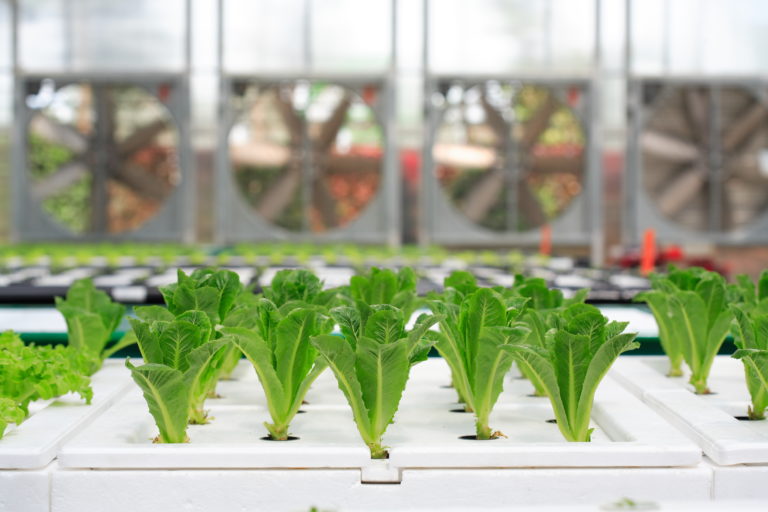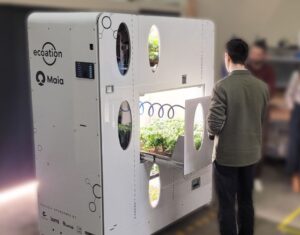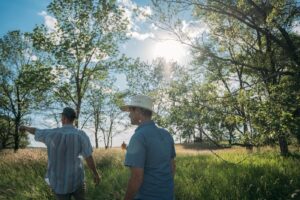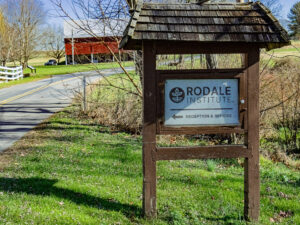Last week the National Organic Safety Board (NOSB), the body tasked with making recommendations to the US Department of Agriculture (USDA) around its organic certification, rejected a proposal that would disallow hydroponic and aquaponic farms from being certified organic.
Hydroponic farms grow fruit and vegetables in a growing medium submerged in water, through which farmers provide nutrients. Aquaponic farmers use connected aquaculture operations to provide these nutrients.
In 2010 the NOSB voted to exclude “soilless” forms of growing, but the USDA decided not to take the recommendation, continuing to allow hydroponic farms to be certified and leading to a period of uncertainty on the subject.
Some 100 hydroponic farms have been certified over the years inside and out of the United States (there are USDA organic approved certifiers all over the world). But the ambivalence on the part of the USDA and according to one certifier, often true belief in a soil-based standard, led many certifiers to stay out of that game.
Ryan Brouillard, crop and livestock certification manager at Quality Certification Services (QCS) in Florida, which does certify hydroponic and aquaponic farms told AgFunderNews in August, “We see it as a useful and productive agricultural system and there is a lot of demand for organic hydroponics. Other certifiers look at the rules as written and see that it is a soil-based standard so I can see where they are coming from too.”
This ruling offers some clarity on the matter, but the NOSB’s recommendations do not automatically change the USDA’s rules as past events have proven. Last year the Cornicopia Institute filed a complaint with the USDA for allowing USDA Organic certifications to be granted to farms despite the NOSB’s 2010 recommendation. The Cornucopia Institute also lodged a petition to exclude hydroponics from USDA organic standards in just one of many actions to avoid the November 1 result.
From one angle, this ruling is simply bringing the NOSB in line with what the USDA has already been practicing. In fact, the farm policy director of the Organic Trade Association said that the decision was maintaining the status quo. But, the reaction from the originators of the quite young National Organic Program, which was finalized only in 2000, has been heated.
Objectors to including hydroponics in the organic certification argue that the standard was created to maintain the health of the soil, which is harmed by conventional pesticides. They feel that soilless growing systems are incompatible with this purpose and should therefore be disqualified from the certification.
Notably, the NOSB is made up of 15 members appointed to a five-year term by the Secretary of Agriculture. Of the 15, four are organic farmers, two are organic processors and packers, one operates an organic retailer, three are environmental conservation experts, three represent consumer interest groups one is a toxicologist, and one is a USDA accredited certifier.
One outgoing member of the board wrote on The Cornucopia Insitute’s website that the organic industry had begun to wield more influence than organic farmers over the board’s actions and makeup.
What do Indoor Farmers think?
Indoor farmers argue that growing hydroponically is decreasing the amount of pesticide, even organic-approved pesticide, going into the soil, along with drastically decreasing water use compared to organic field farming, and is therefore congruous with the intent of the original National Organic Program.
Irving Fain, CEO of Bowery Farming, a high-tech indoor farming operation in Kearny, New Jersey, says that the NOSB’s previous standards were simply out of date with modern agriculture.
“The NOSB’s previous definition of organic was written at a time when the technology that is available today simply did not exist, so it is appropriate to recognize that today’s produce does not have to be grown in a field to meet the highest quality standards,” he said.
Fain’s company frequently uses the term “post-organic” in its marketing, claiming that because Bowery’s process requires no pesticides, it is superior to the organic standard, which allows approved pesticides.
Bowery Farming, which has raised a total of $27.5 million from tech VCs General Catalyst, GGV Capital, and GV (Google Ventures), is unique in that it does not commit to one growing technology. The company uses multiple hydroponic configurations at the Kearny farm, the common link between them being a smart monitoring and controls system called “Bowery OS” developed in-house.
Though Bowery is eligible for organic certification, Fain says that he won’t be seeking it soon.
“Organic certification is not a priority for us right now as we’re currently growing fully traceable, post-organic produce,” he said.
High-tech hydroponic grower Plenty, which raised a record-breaking $200 million this past summer from Japan’s SoftBank Vision Fund among other investors, is taking the opposite tack.
Though Plenty’s South San Francisco farm is not yet selling produce, the facility is already certified organic and the plan is to certify each new facility; the company just announced its second farm will be outside of Seattle.
“Organic farmers are diverse in our production systems, but we are united in our values, priorities, and practices. We are pleased that the NOSB has put this debate to rest and confirmed that hydroponic systems have been and will continue to be excellent suppliers of USDA certified organic products,” Plenty CEO Matt Barnard told AgFunderNews.
Hydroponics is in… What’s Out?
In addition to formally ruling hydroponics and aquaponics in, the board also ruled aeroponics, growing plants with the roots dangling in a mist environment from which they receive water and nutrition, out. Technically aeroponics is a form of hydroponics since water is the primary delivery system for the plants’ nutrition, but the NOSB makes a clear distinction.
New Jersey-based AeroFarms, which recently closed its Series D round on $40 million, is an aeroponic farm and CEO David Rosenberg is dissatisfied with the way the NOSB has framed this decision.
“Regulators and standard-makers should be performance-based and not prescription-based. The performance standards should look at what goes into the plants and what ends up on the plants… Making a distinction between aeroponics and hydroponics discredits the process of making standards around organics and highlights how commercially-driven decisions are made. If a party can deliver to a standard of performance, it should not matter if the nutrients were delivered as a spray versus a pool of water,” said Rosenberg.
The CEO said that AeroFarms has not and is not seeking organic certification, but that he would like to see “a fair set of standards and would like to have confidence in a process. I would hope that the bodies that make these decisions appreciate how commercially driven decisions hurt credibility and ultimately drive people away from the organic certification.”
Of course, the USDA could choose to go its own way on this standard too and act against the NOSB’s recommendation to disqualify farms like AeroFarms, but with zero aeroponic farms certified to date and more than 100 hydroponic farms certified, another departure by the USDA from NOSB recommendations is perhaps less likely.

















Sponsored
International Fresh Produce Association launches year 3 of its produce accelerator